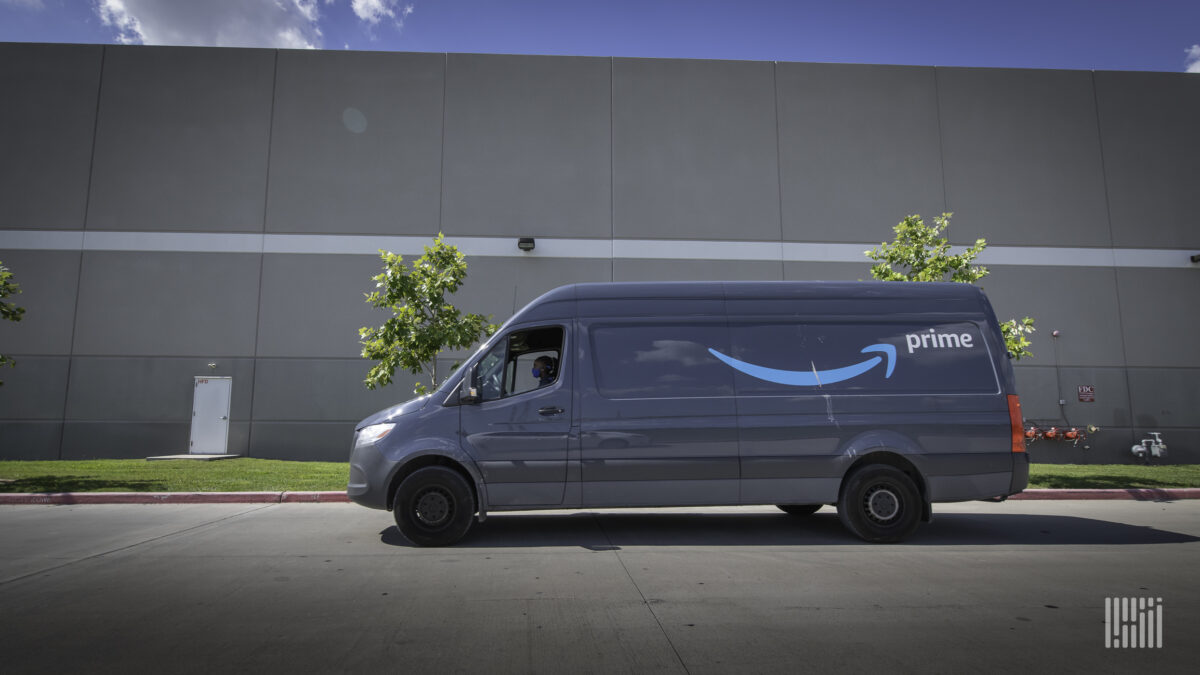Remember when Amazon last year scaled back its facility footprint amid an overbuild and an economic downturn? The e-commerce giant certainly does — and it’s now modifying course.
According to a report from The Wall Street Journal, the firm is expanding its network of ultrafast delivery facilities to as many as 150 over the next few years to improve its same-day delivery capabilities.
Separately, Amazon on Monday announced an initiative designed to support the drivers making those deliveries. The company in 2023 will invest $200 million into safety technology for its transportation network, including measures like automatic braking and in-vehicle cameras.
Revealed a day apart, the two initiatives each address a different side of the delivery experience.
The expansion of ultrafast delivery hubs is geared toward Amazon customers. The facilities, much smaller than the firm’s larger fulfillment centers, are built around preparing orders for immediate delivery rather than strategic storing of inventory.
According to supply chain consultancy MWPVL International, which tracks the status of Amazon facilities around the world, the company has opened 45 such hubs since 2019. They include locations in Los Angeles, San Francisco and Phoenix, though Amazon declined to say how many facilities are in its network.
Per MWPVL, it costs Amazon $1.55 more to fulfill orders from ultrafast delivery sites than it does from its other facilities. But the smaller hubs offer a cheaper alternative for same-day fulfillment than what Amazon can get from the rest of its network. The e-commerce giant also subsidizes some of those costs by charging $2.99 for orders under $25.
Amazon’s push to add more ultrafast delivery hubs comes as its rivals load up on similar facilities.
Target, for example, announced last week that it would spend $100 million on more than a half dozen new sortation centers across the country. Walmart, meanwhile, has continued building out its Walmart Fulfillment Services business. And Shopify, fresh off the multibillion-dollar acquisition of Deliverr, has created a robust fulfillment network of its own.
These companies and others are all capable of delivering orders within hours. The challenge, though, is doing that for the entire country, and Amazon as much as any other firm is taking it on.
The expansion of ultrafast delivery services will be welcome news for Amazon customers. But the people who make those services a reality may soon have something to celebrate too.
Over the next 10 months, Amazon will spend $100 million improving safety for its thousands of delivery drivers. It plans to work toward the goals outlined in the U.S. Department of Transportation’s National Roadway Safety Strategy, which include safety measures around human behavior, vehicles, roadways and post-crash care.
Watch: Amazon allowing sellers to use warehouses
One area in which the company will invest is its middle-mile trucking network, where it has already equipped tractors with features like automatic braking, front-collision and lane-departure warnings, speed limiters, stability control and more. Its trailers also feature systems like anti-lock braking and cargo and door sensors.
Route-planning software and predictive analytics are the last piece of the puzzle. Drivers can access those features directly through Relay, Amazon’s mobile technology that provides real-time alerts and navigation assistance.
Amazon will also direct some of the investment toward its last-mile network. The company began equipping its last-mile delivery vans with in-vehicle cameras in 2020, and it expects the technology to be used in nearly all Amazon branded vehicles by April, including the electric delivery vans it receives from Rivian.
According to Amazon, accident rates in its last-mile network have dipped 35% since the cameras were rolled out.
The company will also continue to invest in Fleet Edge, a routing technology that uses data about issues like construction and unsafe maneuvers to produce safer and more efficient routes. Amazon said GPS accuracy has improved 2.5 times since the technology was introduced.
Amazon also hinted at some more futuristic safety improvements that may roll out later this year.
For example, it’s currently piloting a strobing brake-light system on some of its trailers to improve braking visibility for other drivers. And later this year, Amazon said, it plans to introduce technology that would reduce blind spots using digital side-mirror cameras.
“We’re excited about the progress we’ve made to date and what our continued investments in 2023 will mean as we work to continuously improve in both safety and sustainability,” wrote Udit Madan, vice president of Amazon Transportation, in a blog post. “We will continue to invest and invent to ensure our trucks, delivery vans, trailers and drivers are among the safest on the road.”
Combine that focus with a renewed emphasis on facility construction, and it’s looking even more like the last mile is directly in Amazon’s sights.
Click for more FreightWaves articles by Jack Daleo.
Related articles:
Target announces massive supply chain investment
Last-mile companies poised to shake up the market
Shippo integration streamlines e-commerce shipping operations











